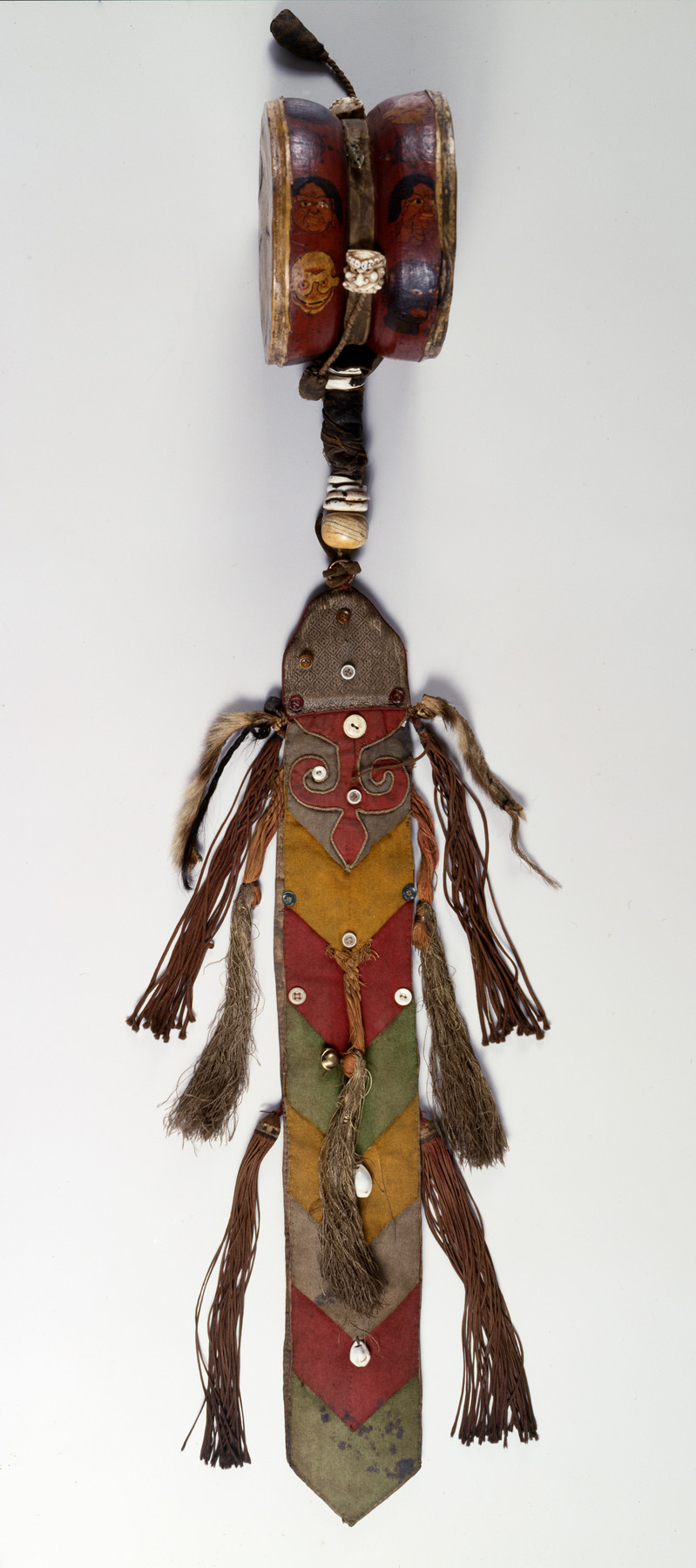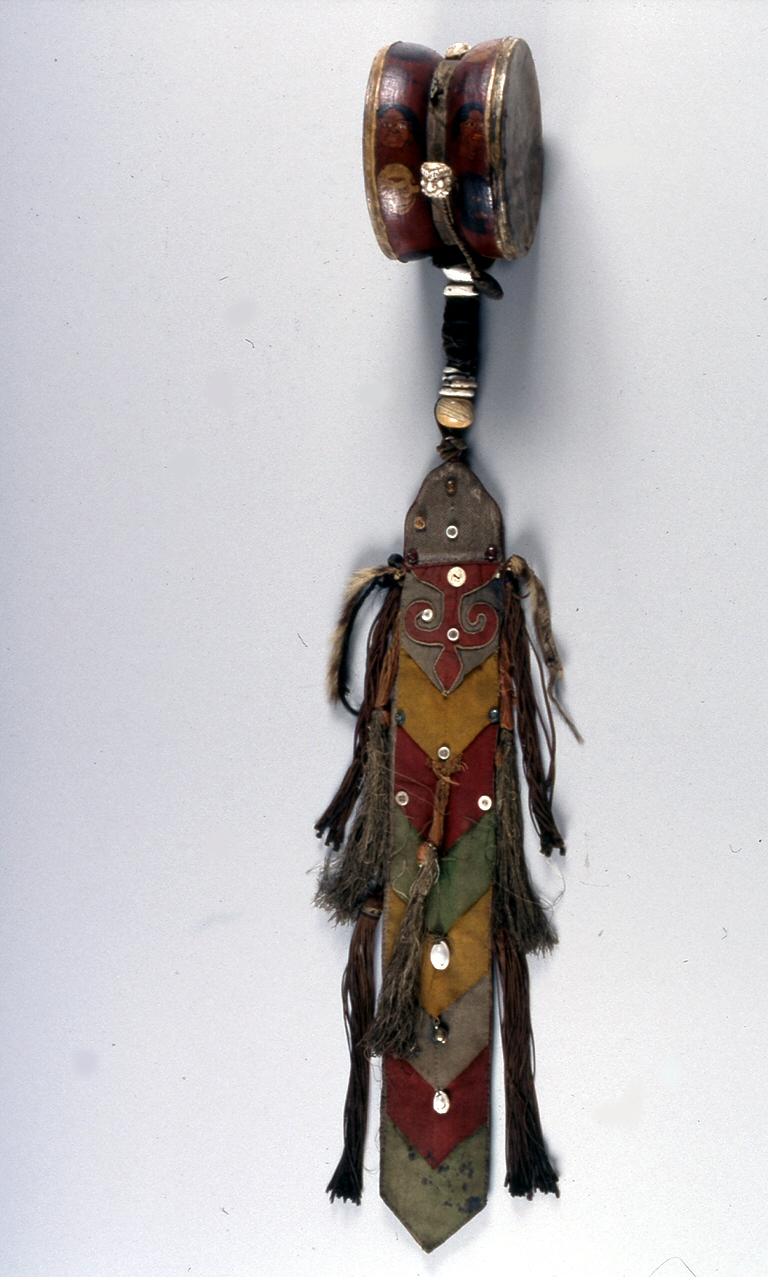Hand Drum
(India, Nepal, and Tibet)
Sound is essential for Tibetan liturgy and ritual, and the damaru (hand drum) is one important source. Held by the right hand, it symbolizes the means (compassion) while the bell in the left hand symbolizes wisdom. The drum is therefore male, and the bell female. The two faces of the damaru also continue this sexual symbology, for they are formed with the skulls of adolescent males and females and, as Beer writes, "sounding together in sexual union symbolizes the union of relative and absolute "bodhichitta" [mind of enlightenment]" (Beer 1999, pp. 258). The drum is also sounded to chase away malefactors as well as to summon the helpful spirits to participate in rituals and feasts. It should be noted that the drum is an important implement in shamanistic rites as well.
This particular example has all of its various elements intact. The sides of the faces are enlivened with graphically painted heads and skulls, while the long, impressive valance of five-colored silks with its side tassels adds a festive touch.
Provenance
Provenance (from the French provenir, 'to come from/forth') is the chronology of the ownership, custody, or location of a historical object. Learn more about provenance at the Walters.
John and Berthe Ford, Baltimore [date and mode of acquisition unknown]; Walters Art Museum, 2002, by gift.
Geographies
Tibet (Place of Origin)
Measurements
38 1/4 x 6 3/8 in. (97.16 x 16.19 cm)
Credit Line
Gift of John and Berthe Ford, 2002
Location in Museum
Not on view
Accession Number
In libraries, galleries, museums, and archives, an accession number is a unique identifier assigned to each object in the collection.
In libraries, galleries, museums, and archives, an accession number is a unique identifier assigned to each object in the collection.
73.144




